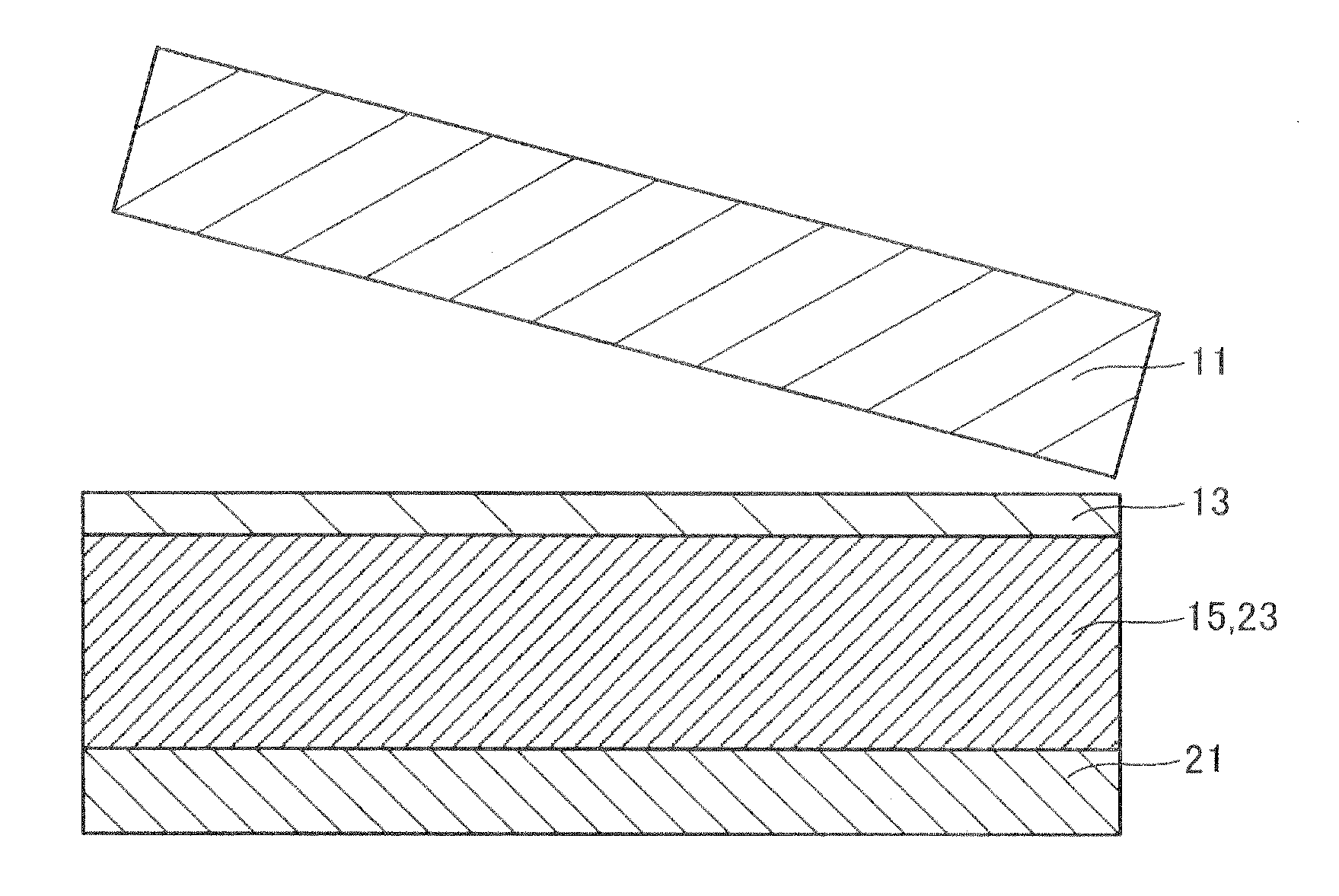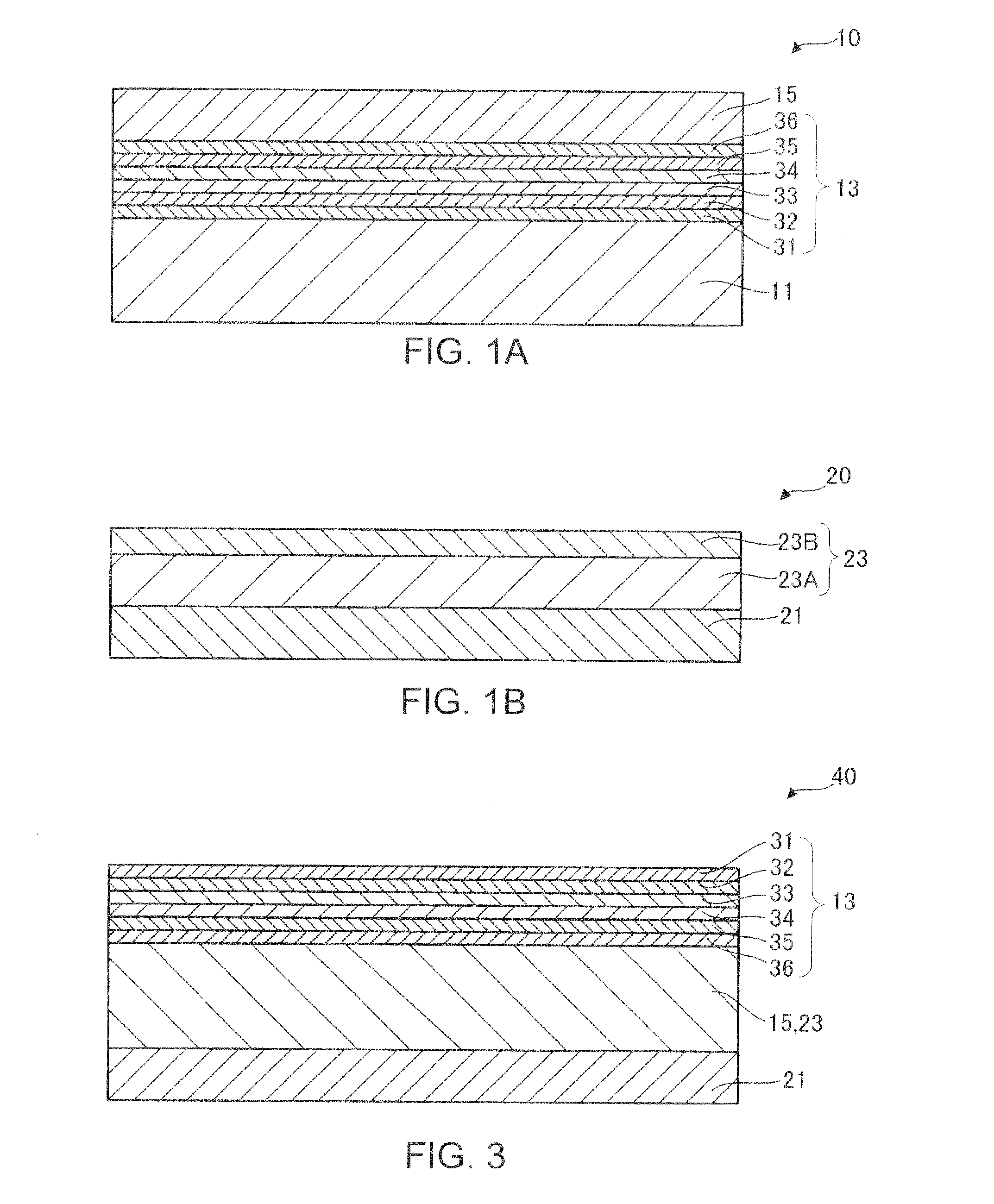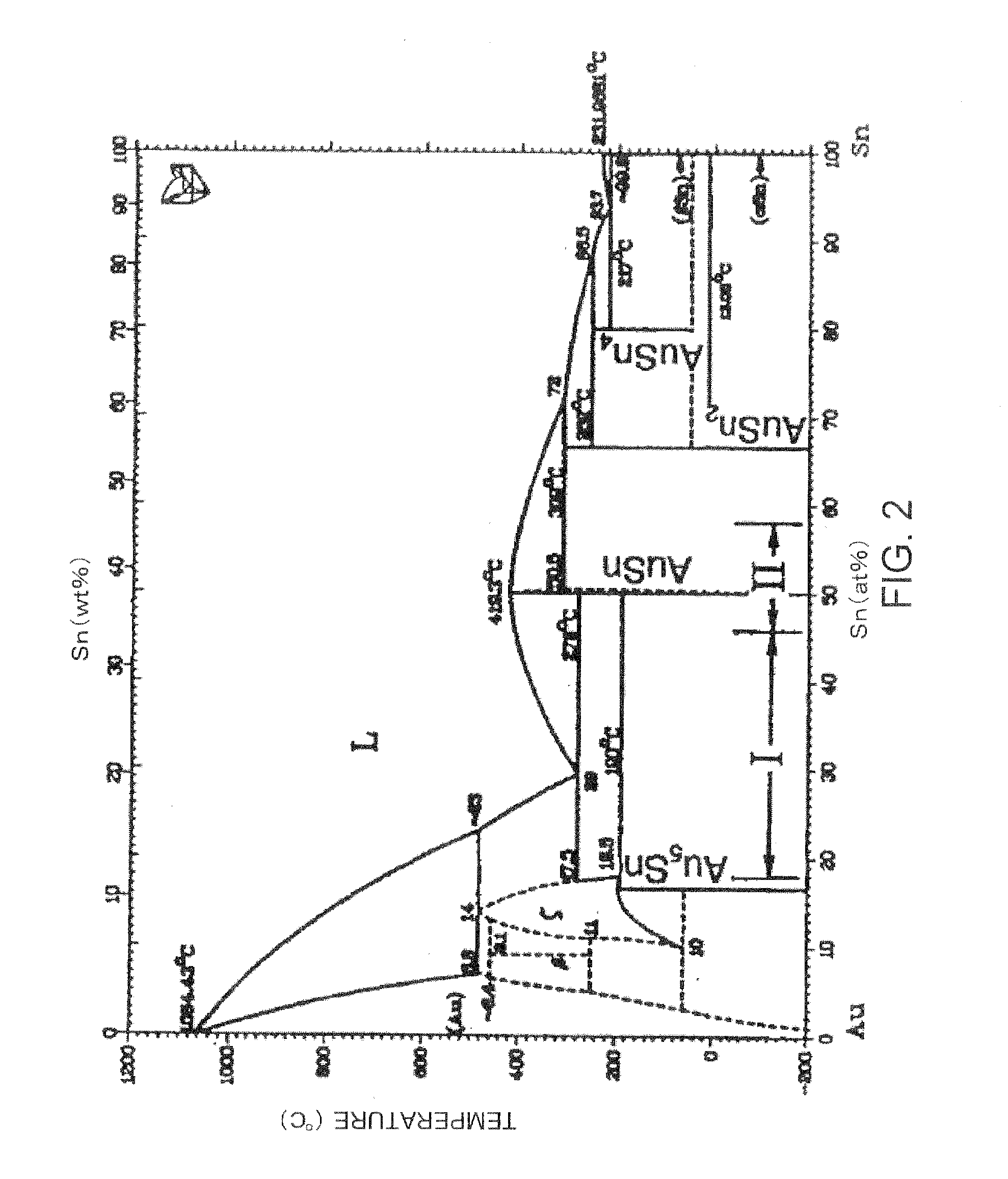Method of manufacturing semiconductor element
a manufacturing method and semiconductor technology, applied in semiconductor devices, semiconductor/solid-state device details, electrical devices, etc., can solve the problems of destroying the wafer during subsequent laser liftoff (llo) of the growth substrate, affecting the efficiency of heat dissipation, and affecting the production efficiency of semiconductor elements, etc., to achieve excellent productivity, good yield and reliability, and less voids
- Summary
- Abstract
- Description
- Claims
- Application Information
AI Technical Summary
Benefits of technology
Problems solved by technology
Method used
Image
Examples
embodiment 1
[0019]A method of manufacturing a light-emitting element according to Embodiment 1 of the invention is described below, referring to FIG. 1A, FIG. 1B, FIG. 2 and FIG. 3. FIG. 1A shows a semiconductor water 10 that is to be bonded to a supporting structure20 shown in FIG. 1B by the method of manufacturing the light-emitting element 40 of Embodiment 1. FIG. 3 illustrates a resulting light-emitting element 40. FIG. 2 is an Au—Sn alloy state diagram.
[0020]As shown in FIG. 1A, the semiconductor wafer 10 includes a growth substrate 11, an element structure layer (device layer) 13 grown on the growth substrate 11, and a first bonding layer 15 formed on the upper face of the element structure layer 13.
[0021]Firstly, the growth method of the element structure layer 13 is described. For example, an MOCVD method is used in epitaxial growth, on the (001) face of a sapphire substrate 11 of thickness 430 μm and diameter 2 inches, with the growth temperature between approximately 500° C. and 1100°...
PUM
| Property | Measurement | Unit |
|---|---|---|
| temperature | aaaaa | aaaaa |
| temperature | aaaaa | aaaaa |
| thickness | aaaaa | aaaaa |
Abstract
Description
Claims
Application Information
 Login to View More
Login to View More - R&D
- Intellectual Property
- Life Sciences
- Materials
- Tech Scout
- Unparalleled Data Quality
- Higher Quality Content
- 60% Fewer Hallucinations
Browse by: Latest US Patents, China's latest patents, Technical Efficacy Thesaurus, Application Domain, Technology Topic, Popular Technical Reports.
© 2025 PatSnap. All rights reserved.Legal|Privacy policy|Modern Slavery Act Transparency Statement|Sitemap|About US| Contact US: help@patsnap.com



